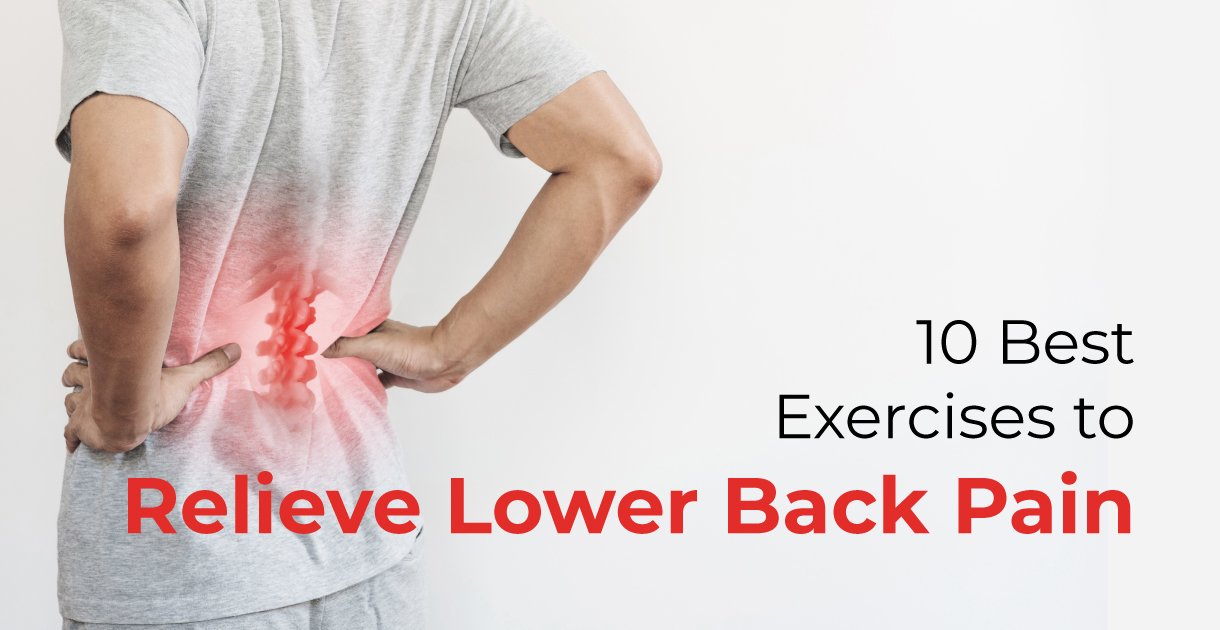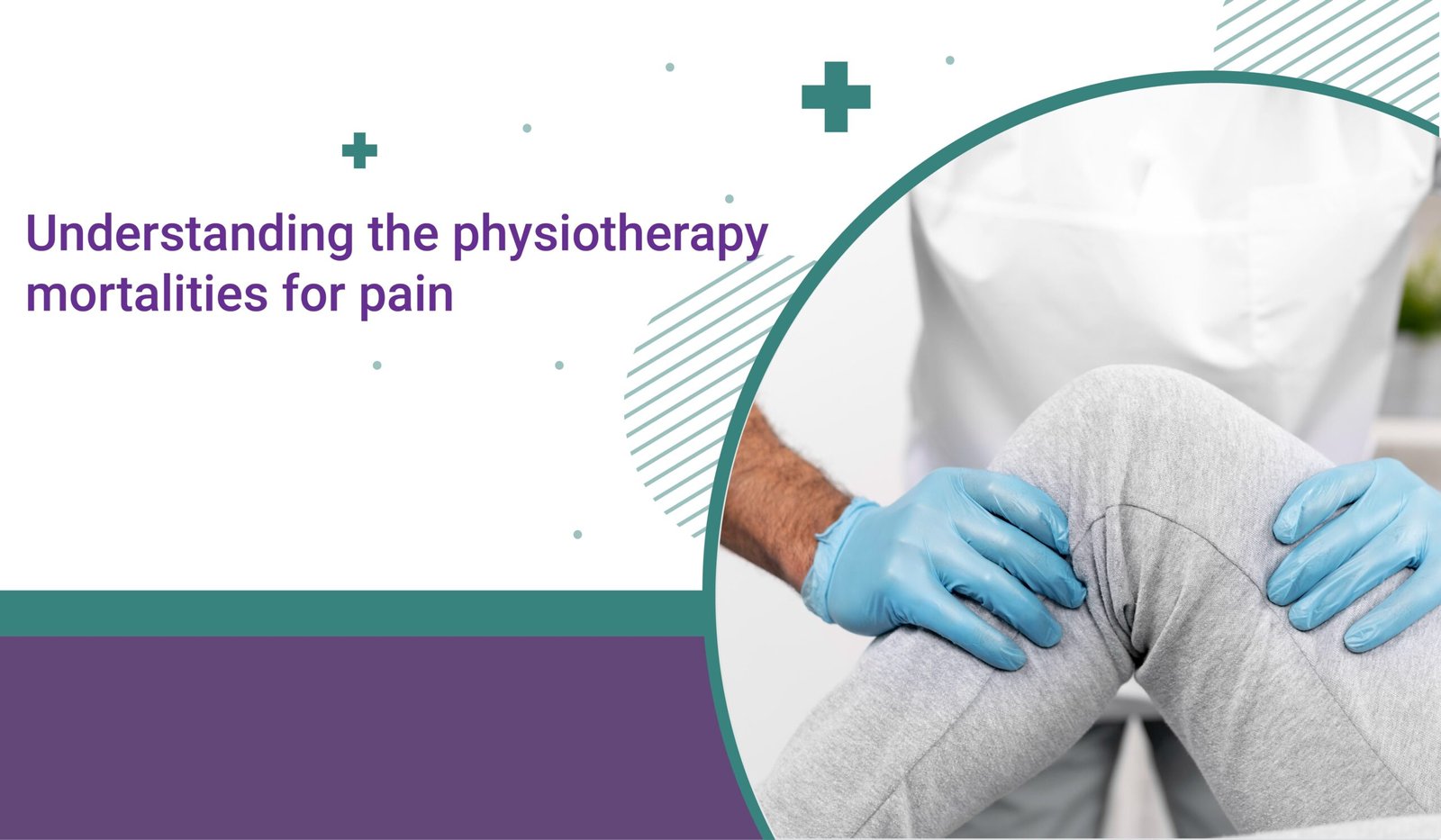10 Best Exercises to Relieve Lower Back Pain
Lower back pain is common and will affect almost everyone at some point in their lives. Most people are advised to exercise regularly to avoid lower back pain. Of course, the workouts you undertake must be reasonable; we are not advocating going for a run or lifting large weights; that would be foolish. However, there are several excellent exercises that you may use to relieve lower back discomfort. These exercises are quite gentle, but always listen to your body and stop if you feel any pain.
Of fact, there are other causes of lower back pain, so seeing a physical therapist is a good idea. That’s where Om Physio Plus Nutrition comes in. It provides customers with skilled and experienced professionals who will provide the best treatment available.
Common Exercises for Lower Back Pain

Deep Abdominal Strengthening
It is one of the most effective exercises for lower back pain. For this lower back pain exercise, lay on your back, place a small cushion under your head, and bend your knees to perform this exercise.
- Your feet should be hip-width apart and on the floor.
- Keep your upper body relaxed and your chin gently tucked in.
- Take a long breath focusing on bringing your belly button towards your spine as you breathe out.
- Keep this moderate contraction going for 5 to 10 seconds.
- As you exhale, relax your abdominal muscles.
Because this is a steady, gentle tightening, use no more than 25% of your full strength. Repeat five times more.
Lower Tummy Strengthening
Strengthening your lower belly muscles is critical since they operate in tandem with your lower back. It means that if the lower belly muscles are weak, the lower back can stiffen, resulting in lower back pain. These are the reasons why it is one of the most recommended exercises for lower back pain.
- Lie on your back, your knees bent, and your feet flat on the ground.
- Breathe in and draw one knee towards your chest as you exhale, then return the foot to the floor.
- Repeat this exercise on each leg six to eight times.
If your back hurts in any way, this workout is not for you, at least not right now.
Bridge
The bridge is another excellent exercise for lower back pain. To complete this lower back pain exercises:
- Lie on your back with your knees bent and your feet hip-width apart on the floor.
- Inhale deeply and exhale slowly, lifting your hips off the floor until your shoulders, hips, and knees form a straight line.
- As you take a deep breath, descend your hips to the floor.
Repeat eight to twelve times more. Again, this exercise should not cause any more back pain.
Pelvic Tilts
Another excellent exercise for lower back pain is the Pelvic Tilt. For the best results,
- Lie on your back with a little cushion beneath your chin.
- Bend your knees and set your feet hip-width apart on the floor.
- Maintain a calm upper body and gradually tuck your chin in.
- Contract your stomach muscles and gently flatten your lower back onto the floor.
- Return to the starting position by tilting your pelvis towards your heels until you feel a gentle arch in your lower back and your back muscles clenching.
- Place one hand on your stomach and the other beneath your lower back to feel which muscles are working.
Repeat 8–12 times, shifting your pelvis back and forth in a steady rocking motion.
Bird Dog
The bird dog exercise is depicted below and is an excellent exercise for lower back pain:
- Your spine is in a neutral posture, and you must keep your head aligned with it.
- Inhale deeply and exhale by extending one leg and the opposite arm to align with your spine.
- You must always retain your spine in a neutral position. Therefore, don’t let your lower backdrop.
- Hold for 5-10 seconds, then lower your leg and arm to the ground as you breathe.
Repeat this lower back pain exercise eight to twelve times on each side.
Lower Back Stretch
Another effective lower back pain exercise is Lower Back Stretch.
- Keep your head in line with your spine, shoulders, and elbows from locking.
- Take a deep breath and gently exhale, bringing your bottom back towards your heels.
- Maintain the stretch for 20-30 seconds.
Bring your body back up onto all fours as you breathe in. Repeat six to eight times more.
Leg Stretch
When you have lower back pain, it is quite usual for your hamstring muscles, which are located on the back of your legs, to be very tight. As a result, stretching them out is advised. To complete this exercise:
- Lie on your back with both feet on the floor, and your knees elevated.
- Wrap a towel around the ball of one foot. Straighten your knee and pull back on the towel carefully.
- Feel for a mild stretch along the back of your leg, but don’t overdo it.
- Maintain for 20 to 30 seconds.
Repeat each leg twice.
Piriformis Stretch
The piriformis, a muscle in your buttocks, can also be tight when you suffer lower back pain. The stretch below is beneficial in stretching this muscle and is extremely simple to perform. To complete the exercise:
- Lie on your back with your right ankle crossed over your left knee.
- Take a big breath in a while, gripping the thigh of your left leg.
- Pull the knee in towards you as you exhale.
- Maintain the stretch for 20-30 seconds.
Repeat twice more for each side.
Spine Stretch
This spine stretch is an effective exercise for lower back pain and is excellent for extending your spine and feels fantastic:
- Lie on your back with a little cushion beneath your chin.
- Keep your knees together and bent.
- Maintain a calm upper body and gradually tuck your chin in.
- Take a long breath and rotate your knees to one side, then your pelvis, while keeping both shoulders on the floor as you exhale.
- As you return to your starting position, take a deep breath in.
Repeat six to eight times on each side.
Hip Stretch
It tightens your lower back and might cause back discomfort. To stretch the hip flexors, do the following:
- Kneel with one knee on the floor and one foot in front, knee bent.
- Push your hips forward while keeping your back straight.
- Maintain the stretch for 20-30 seconds.
Repeat twice more on either side.
Conclusion
If these exercises for lower back pain are not helping, you should consult an expert for better treatment. And if you are looking for one, kindly contact the expert Physiotherapist, Dr. Niraj Patel, at Om Physio Plus Nutrition. The team of professionals will provide you with best-in-class treatment that will help you to get rid of lower back pain.



